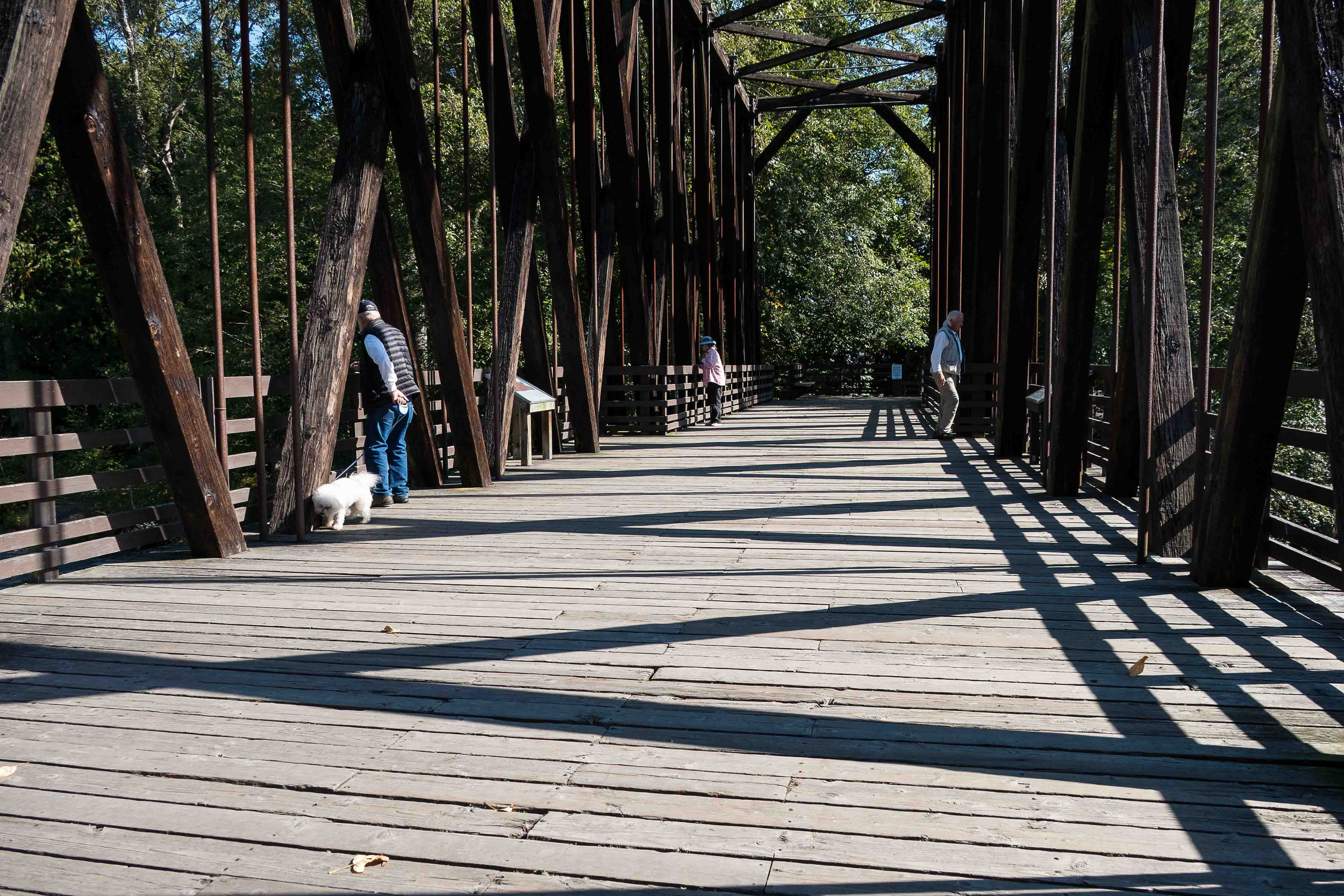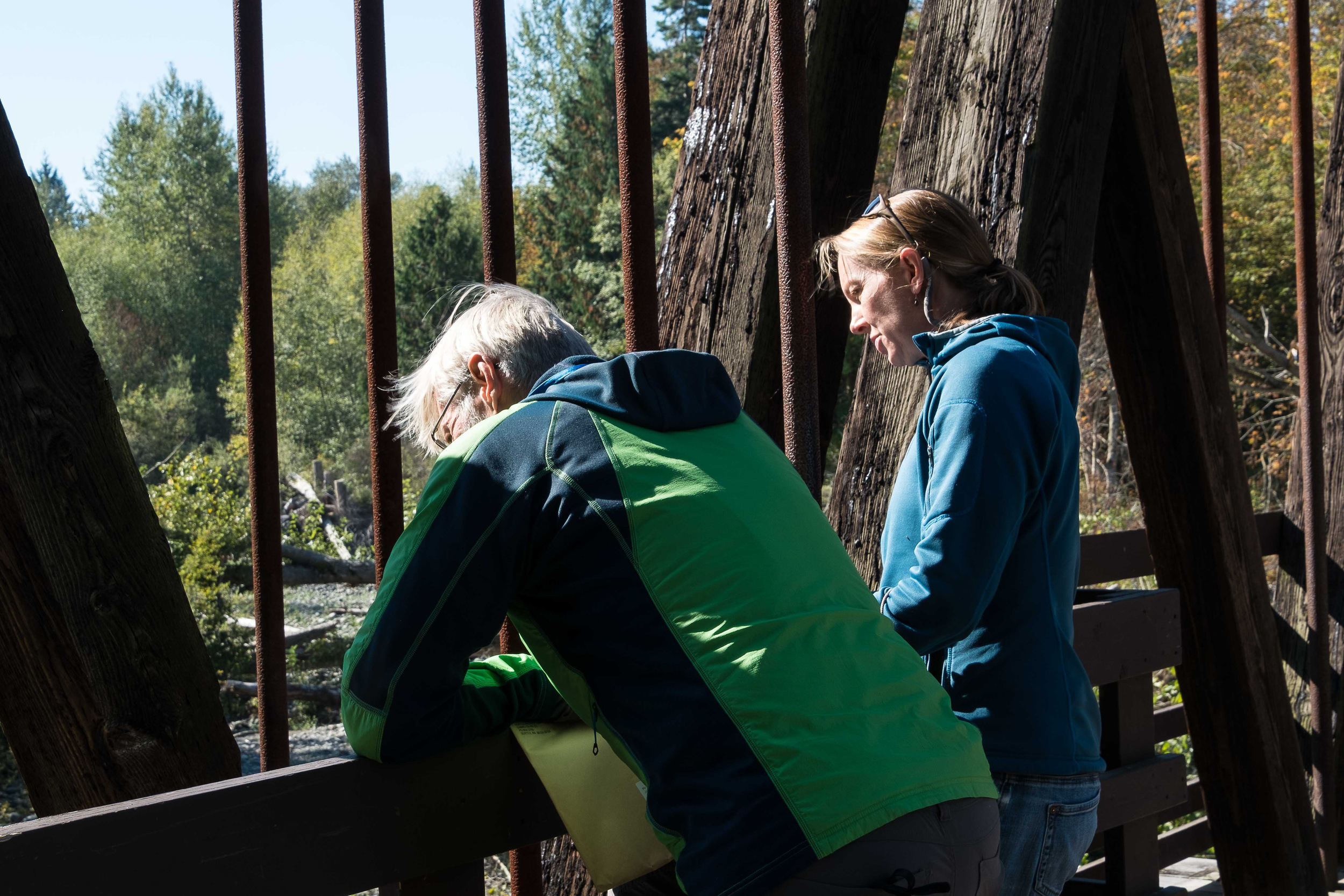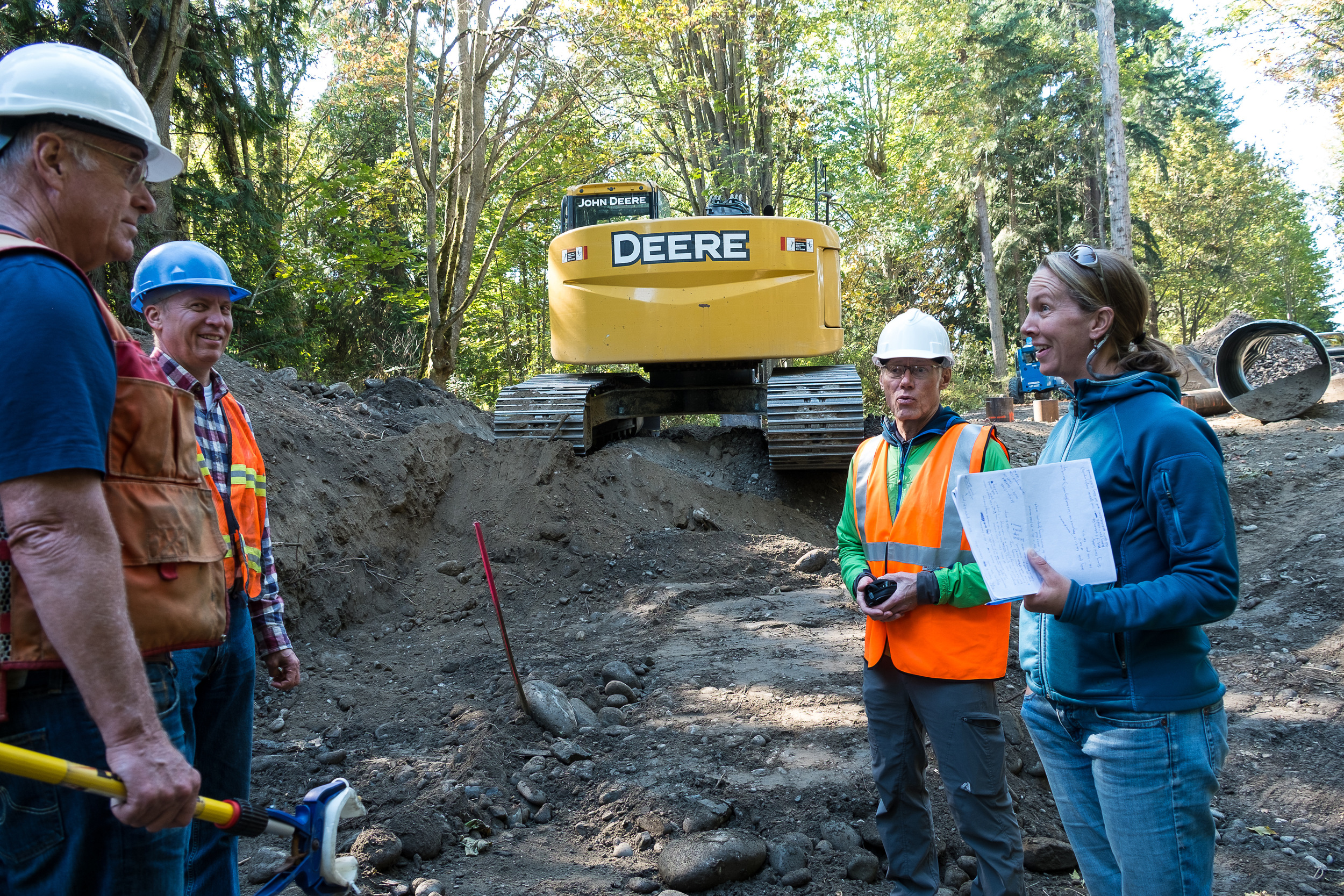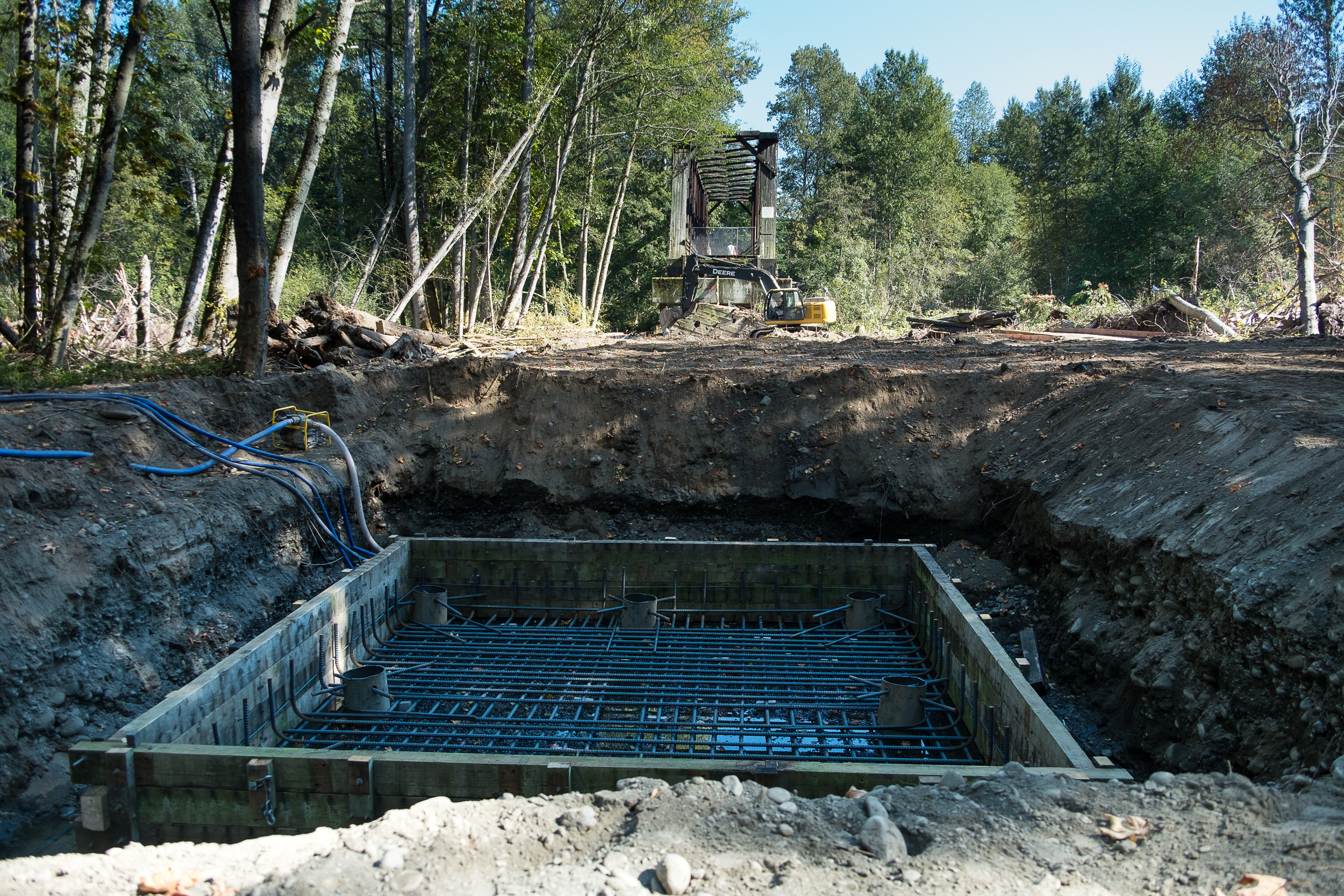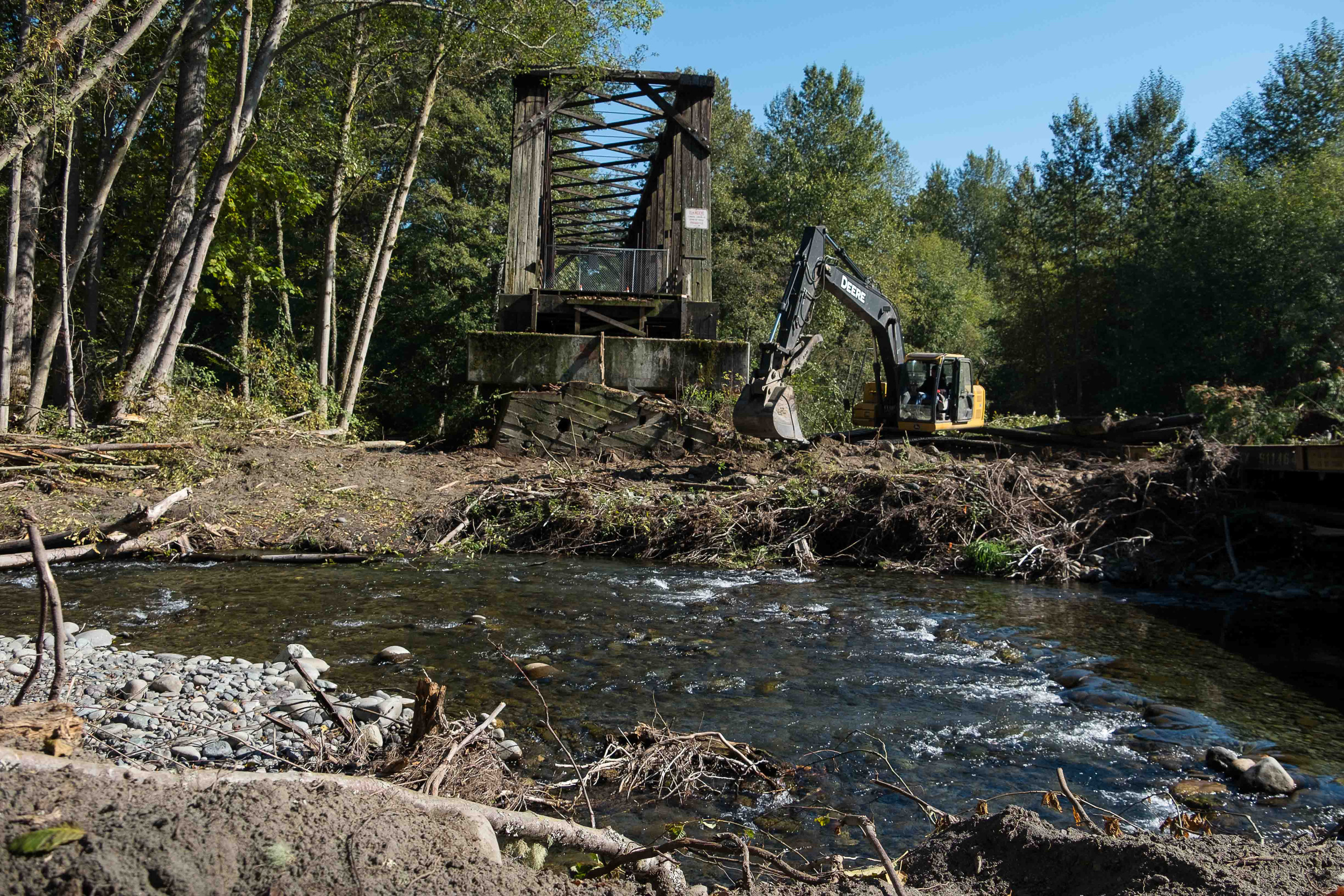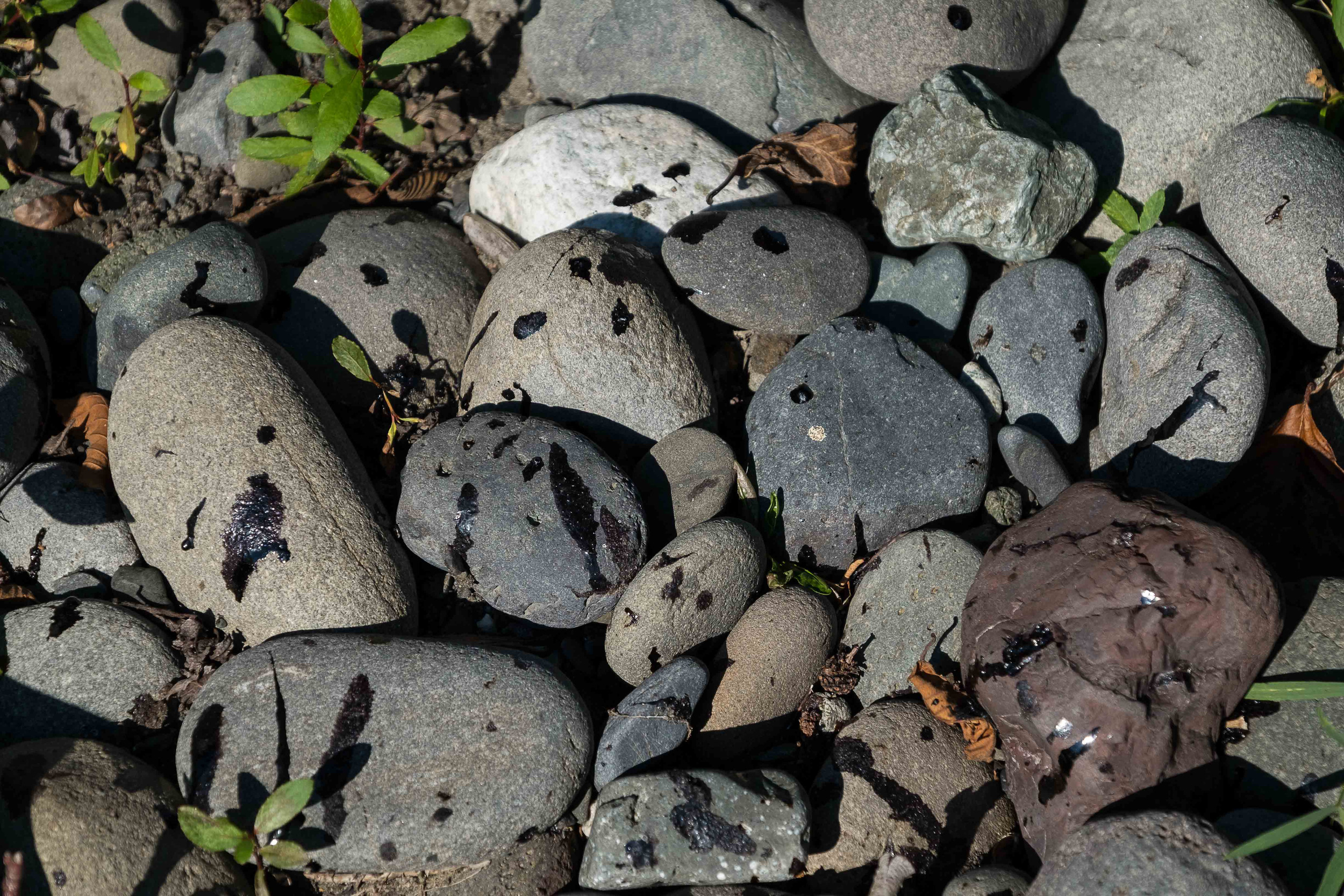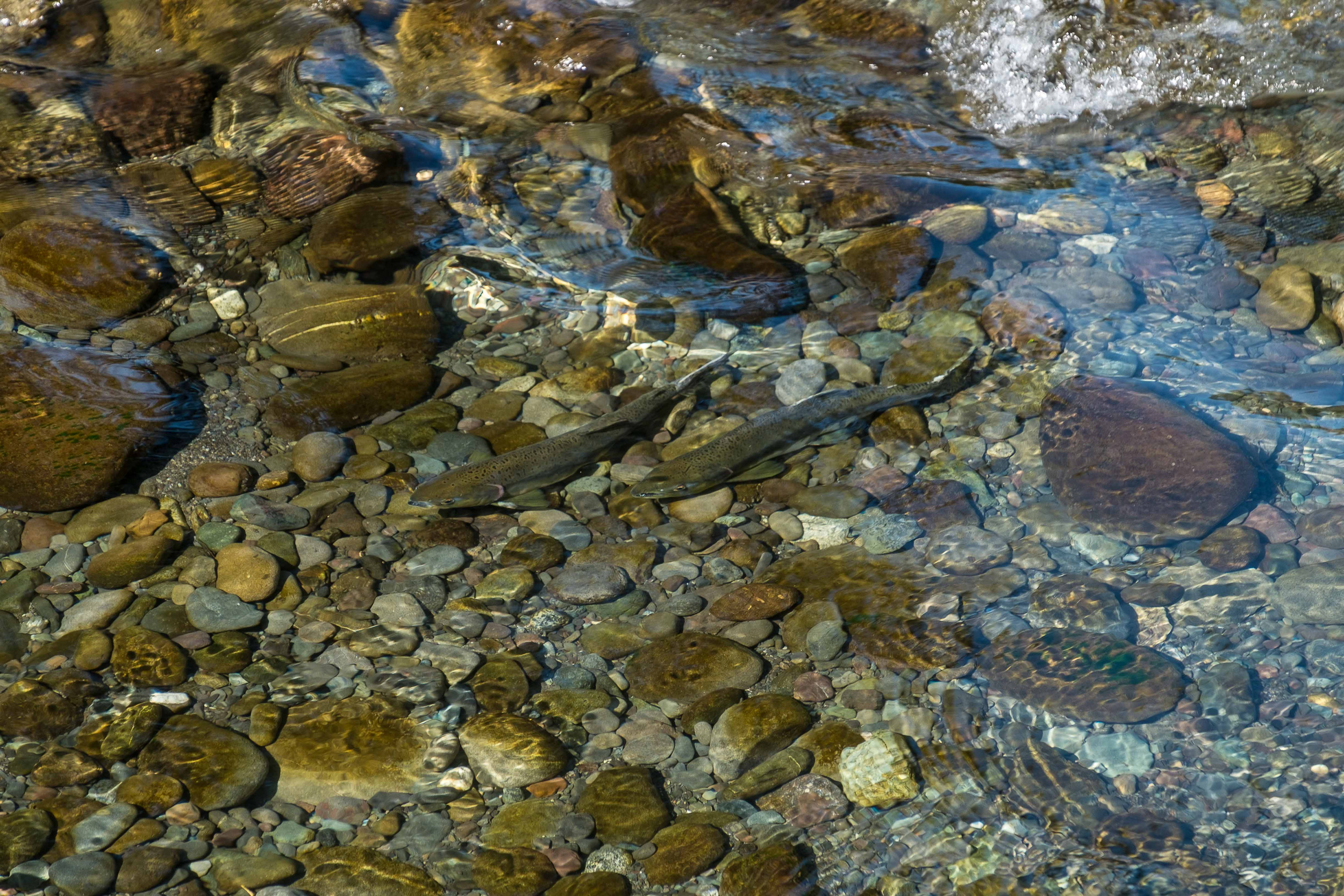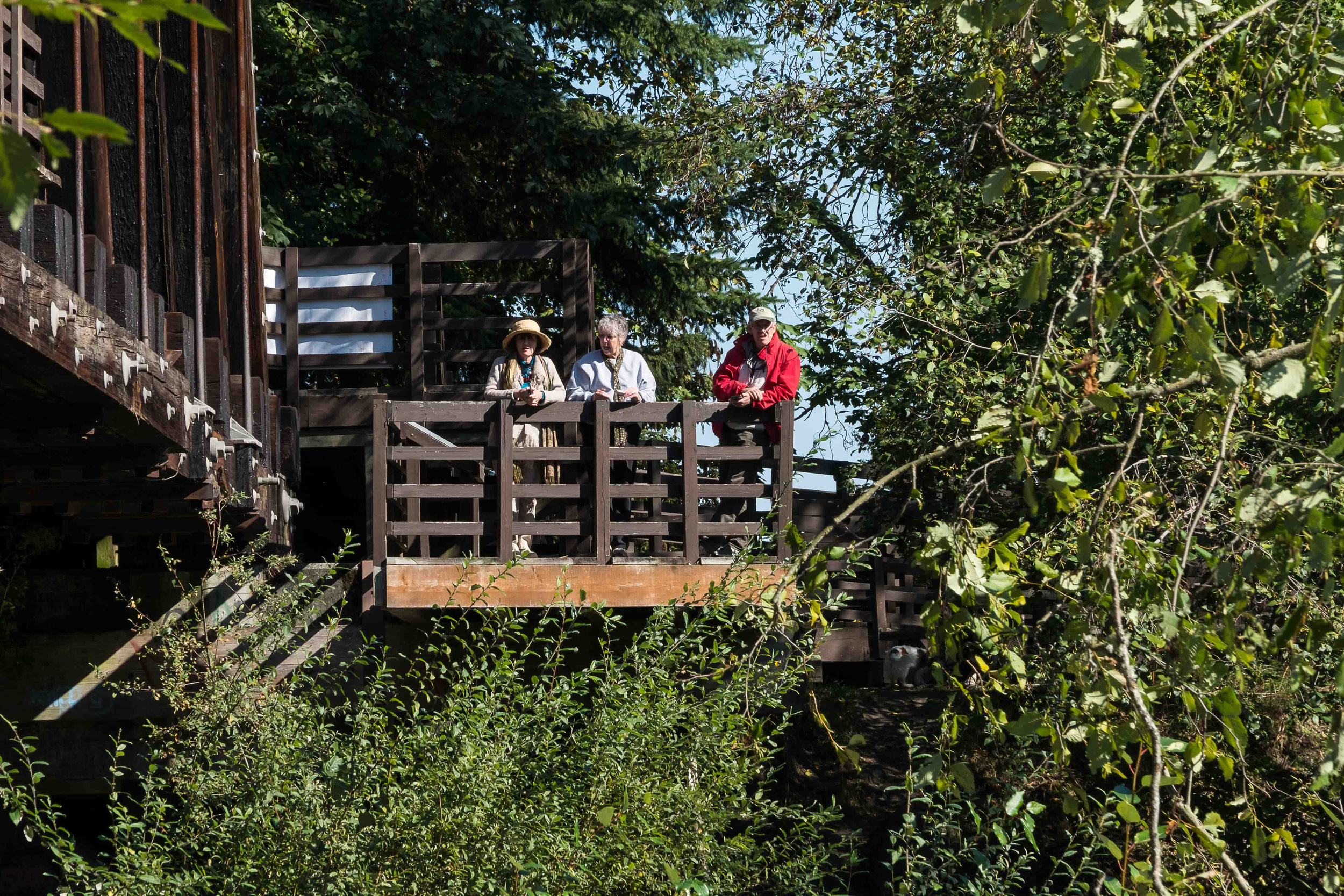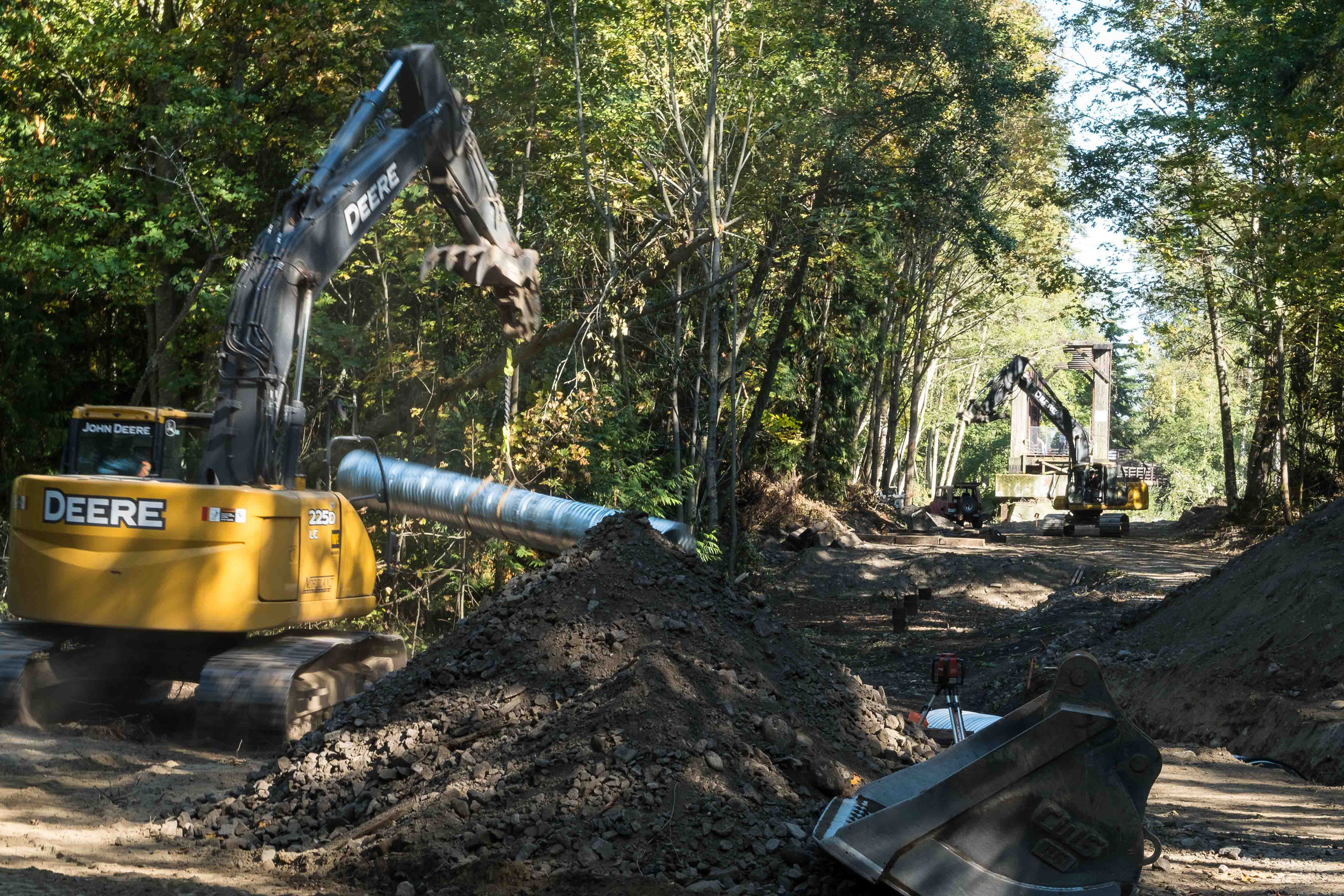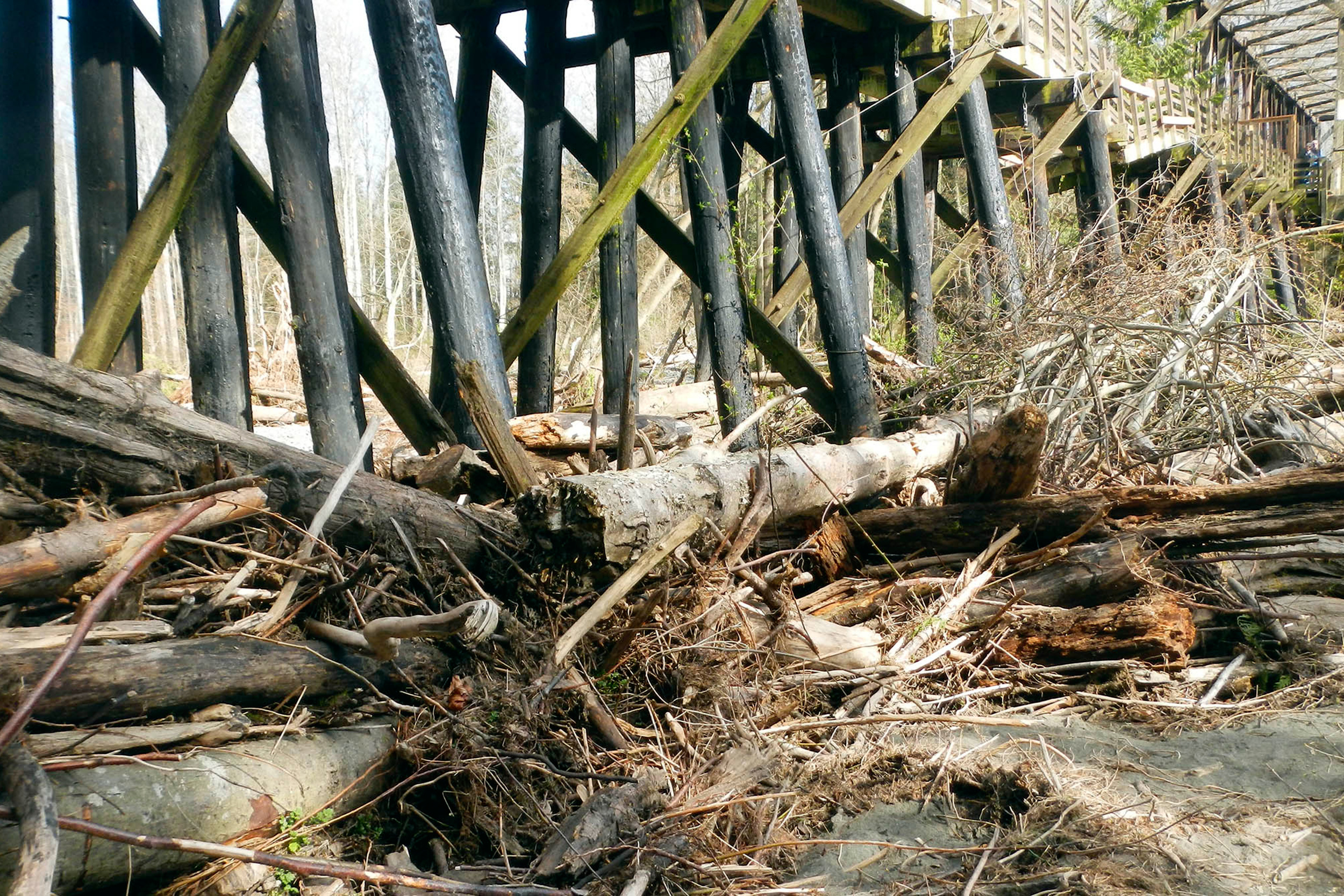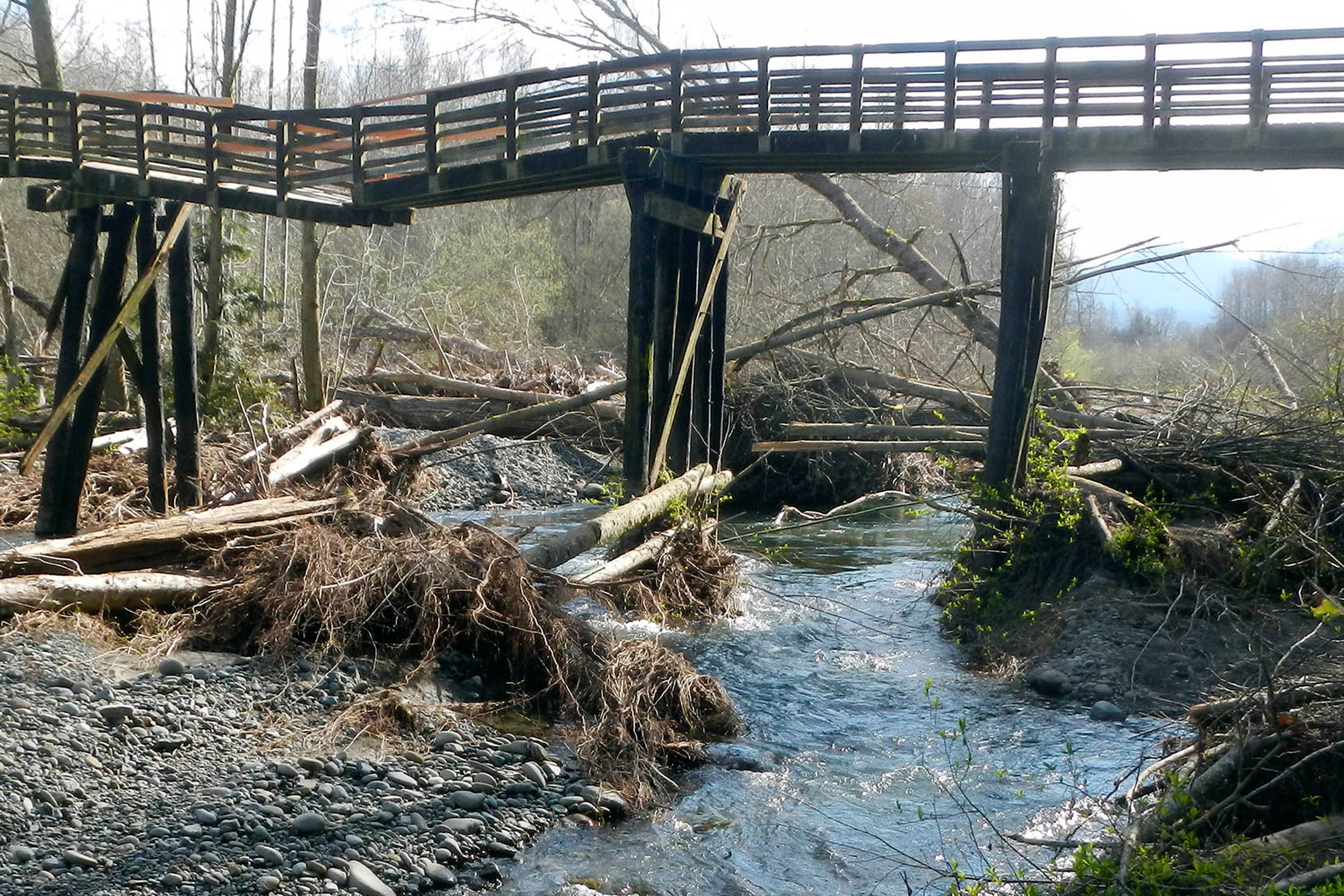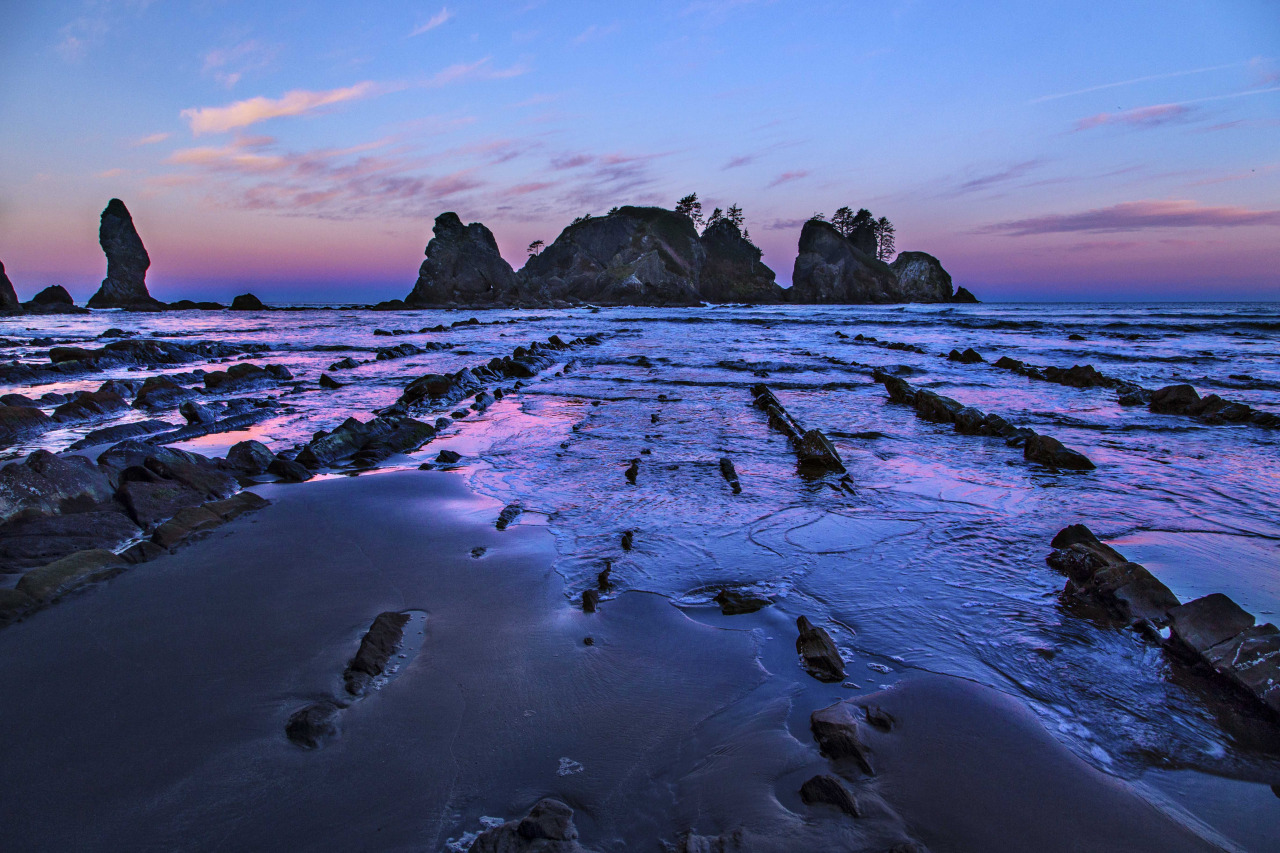Let’s thank our senators and urge their colleagues in the House to move the Great American Outdoors Act forward.
Good Morning Mount Rainier: November Photo of the Month
The perfect place for sunrise in Washington: Tolmie Peak Fire Lookout
Written and Photographed by Riley Beck, Northwest Photographer
My friends and I decided to drive down to Tolmie Peak Fire Lookout at Mount Rainer National Park for a sunrise. We didn't sleep (being that the drive was a little over a three hour drive from home). We got coffee from the 24 hour coffee stand and left around one in the morning.
After hours of driving, followed by 17 miles of potholes and washboard, we arrived at the trailhead and took off with headlamps excited for what was ahead. It was my first time that close to Mount Rainer and it was stunning. You reach Eunice Lake a couple miles in and see Rainer for the first time in all of its glory and a fire lookout perched high above the lake.
Some moderate switchbacks lead you above Eunice Lake until you reach the fire lookout. If there is possibly a perfect sunrise spot in Washington this is it. An unobstructed view of Rainer lit up by the golden sun with Eunice Lake below is the perfect setting. It was a very long night and morning, but well worth the hours of driving and lack of sleep. The trip and view are one I will not soon forget.
Riley Beck has lived in Washington his whole life. He enjoys hiking and backpacking with his friends and spends every day off possible on the trails. See more of his photos.
Floodplain Restoration along the Olympic Discovery Trail
A win-win project for people, nature and our treasured salmon
Written by Jenny Baker, Senior Restoration Manager, and Photographed by Julie Morse, Regional Ecologist
When a popular recreational trail on the Olympic Peninsula was damaged by a flood and closed last February, there were two options: either 1) fix the trail for walkers and bikers, or 2) fix the trail for walkers and bikers AND do it in a way that improved fish habitat and reduced flood risk. The choice was obvious: build a project with many positive outcomes.
The Olympic Discovery Trail is a rails-to-trails system that currently extends from Discovery Bay to Port Angeles and receives 100,000 visits per year. When a portion of the trail over the Dungeness River near Sequim was damaged, walkers and bikers were anxious to get it fixed quickly. Randy Johnson, Habitat Program Manager with the Jamestown S’Klallam Tribe, saw a great opportunity for a win-win-win project, but he had to act fast to make sure the project could incorporate benefits to fish and flooding, and get the trail back in use.
The damaged section was part of a 585-foot-long trestle supported by creosote pile structures every 16 feet across the floodplain. Fill had been placed across an additional 165 feet of floodplain to meet the pile-supported trestle. These structures caused a major blockage, wracking up wood, blocking flood flows and requiring that the river be “trained” to go under a bridge. This essentially forced the river into one place and cut it off from the floodplain. Healthy rivers move around in their floodplains, creating vital habitat for fish, storing floodwater and keeping people nearby safe. These processes had been severely limited by the trestle and fill.
Because the project had several positive outcomes and support from various stakeholders, it moved forward quickly. Using funding from Floodplains by Design, Salmon Recovery Funding Board, Bureau of Indian Affairs Climate Adaptation fund and other sources, the design was completed, permits were obtained and construction was underway before the end of August. By early October, the old pilings had been removed and new footings to support a just a few concrete posts - 180 feet apart instead of 16 feet apart - were being constructed.
By December 2015 the reconstructed trail will be completed, allowing the river access to an additional 750-foot-wide floodplain. Recreational trail users will be able to get back on the trail. Viewing platforms will allow groups of students and birders to gather out of the way of walkers and bikers, and take in the river and its wilder inhabitants.
This year there has been a large number of pink salmon returning to the Dungeness River to spawn. When we toured the project site in early October, the river was alive with fish hovering over their redds. As an avid biker myself, I love that there are trails like this where I can look down and see salmon spawning.
The Olympic peninsula provides critical habitat for several species of threatened salmon. The last few years have seen some big restoration projects completed, between JimmyComeLately, the Elwha River Dam removals, and now several projects along the Dungeness River and estuary. It’s inspiring to see the impact these big projects are having on restoring salmon habitat.
Meadows on a Mountain: The August Photo of the Month
Sahale Arm Trail, North Cascades National Park, WA
Written and Photographed by Sam Davis, Northwest Photographer
It was Fourth of July weekend, and not wanting to be surrounded by people blowing things up, my wife and I decided to load up the truck and head for the mountains. We had a better idea in mind for celebrating our independence and it consisted of a trip to Sahale Arm.
Our original plan was to snag a permit at the Marblemount Ranger Station and spend the night at the Sahale Glacier Camp, but unfortunately all of the spots had been claimed so we decided to make it a day trip instead.
Having been in the area before that year on El Dorado, I was excited to get a slightly different perspective from Sahale Arm of the surrounding peaks. After making it through the seemingly endless switchbacks, we were finally rewarded with open views of Johannesburg Mountain.
Continuing on the trail, we saw a few deer making their way through the brush and enjoying the beautiful weather and views. As we approached the Sahale Arm we were treated to breathtaking views of some of my favorite North Cascade Peaks including Eldorado, Forbidden, The Triplets and Mixup.
Having reached a great resting spot with 360 degrees of stunning views, we fueled up and soaked in the sunshine. Our plan was to enjoy the weather and take our time to explore. With the sun setting later in the day, we had enough time to take a nap and snap some pictures as we continued upwards towards Sahale Peak.
When we came across this particular meadow, I couldn’t believe that a place like this exists just a few short hours from the busy city. This spot was stunning to me because of its contrast. Here you are walking through a beautiful and soft meadow filled with wildflowers, while in the distance jagged mountain tops carve out the horizon. I dropped everything, grabbed my camera and hit the shutter button. This was definitely one of the most memorable scenes I’ve ever experienced.
We spent the rest of the evening enjoying a warm meal while watching the sky turn majestic colors as the sun began to set. It was hard to leave such a beautiful place and I look forward to returning soon.
Sam Davis grew up in the Pacific Northwest and currently lives in Seattle. He works as an accountant during the week and spends his weekends exploring the Cascades with his wife and dog. See more of his work: http://www.samdavisphotography.com/
Cup of Coffee: The July Photo of the Month
Hidden Lake Trail, North Cascades National Park, WA
Written and Photographed by Back 40 Outfitters Trail Team Members
The understated photo title, Cup of Coffee, is a play on the powerful and in your face color from the sunset this particular evening on the rooftop of the North Cascades. My father and I had decided to take a special trip away from the hustle and bustle, visiting the site of my very first backpacking trip 15 years ago: Hidden Lake Trail. The trip served a dual purpose: quality time with my dad and testing out the equipment in our Back 40 Outfitters backpacking kit.
Holding a wealth of treasures at the end of the trail, Hidden Lake rewards all travelers who brave the switchbacking 3,000 foot trek through a gorgeous green avalanche chute. Most visitors enjoy the view from the fire lookout, while overnighters drop over the saddle into the North Cascades National Park glacial cirque that holds the cobalt blue water of the lake. From this vantage point, Hidden Lake resembles an infinitely pool poised to cascade off its eastern-most shoulder. We prefer a secluded campsite, perched above the lake to the west with the lookout’s rocky spire looming above. Here, a couple steps in any direction give you a 360-degree view of the granite sentinels that surround you.
After breezing through camp set-up and scrambling to scout the views, we made dinner and found our water source: a trickle of melting snow water on the snowfield below our site. It was interesting to see how the flow of water changed depending on ambient temperature and sun exposure. Evidence: an overnight chill and absence of sun on the west slope had shrunk our water source to slow drip for breakfast.
Finally, the moment that launched my dad’s outdoor modeling career. After dinner we heated leftover water for some coffee to warm up before tucking in for the night. As the August sky began to change color, I hustled to capture the scene and my dad unknowingly climbed himself into the frame. Since the trip, we’ve made a few prints of this shot that now decorate our households and workplace, visual evidence of this awesome trip. The sunset and scenery are truly impressive, but what I love most about this photo is way it captures my dad in his element and reminds me of the impact of his adventuresome spirit on my life.
This photo was captured by Back 40 Outfitters Trail Team member Nate and edited by their staff photographer Eunice Lommen.
Back 40 Outfitters is an outdoor gear rental & events company based in Seattle that specializes in backpacking, car-camping, and concert gear kits. Our service takes all the roadblocks out of camping (we even help brainstorm trip planning) by offering complete equipment packages and a convenient delivery model. They can’t wait to help get you out on adventures like this one. Find them at www.back40outfitters.co and follow their adventures on Instagram @back40outfitters.
Nature Conservancy Buys 3,184 Acres on the Hoh River
Photographs By (1) Keith Lazelle & (2) Joel Rogers
The Hoh River rushes out from Mount Olympus and the Olympic rainforest. When itis running high, it pulls cedars and spruce and other rainforest giants out of the ground and tosses them around like matchsticks. This is a pristine glacial Olympic river, one of the best salmon rivers on the west coast of the United States, with runs of coho, chinook, and pink salmon.
The Nature Conservancy purchased 3,184 acres along the Hoh River on March 30. The purchase is part of a Nature Conservancy initiative to increase salmon populations, promote sustainable economies and restore temperate rainforest on the Washington coast.
“On the Washington Coast, generations have drawn their livelihoods from a wealth of natural resources—abundant salmon and trees that grow faster than anywhere else in the world,” said Mike Stevens, Washington State Director for The Nature Conservancy. “We’re working with local communities to ensure that these wild salmon rivers and forests will continue to provide recreation and sustainable livelihoods for generations to come.”
This $7,004,800 acquisition builds on work by the Hoh River Trust, which owns 6,800 acres along the Hoh River, to create a 32-mile conservation corridor extending from Olympic National Park to the Olympic Coast National Marine Sanctuary. Home to old-growth and temperate rain forest, the Hoh River corridor provides critical habitat for marbled murrelet, northern spotted owl, bald eagle, and bull trout. It also supports some of the healthiest native salmon and steelhead runs in the lower 48 states.
The Conservancy has also purchased and is restoring forest lands on the Queets and Clearwater rivers, and is working with the Quinault Indian Nation for restoration of forests on the Quinault River. Together with the earlier acquisitions on the Queets and Clearwater rivers, the Conservancy now owns 11,130 acres of forest lands in Jefferson County. Conservancy foresters and ecologists have developed long-term plans that include planting trees, restoring important salmon and wildlife habitat, and sustainable long-rotation timber harvest where it makes sense. All these activities generate jobs in coastal communities.
This acquisition is made possible with support from the Wyss Foundation, the Norcliffe Foundation, and other private donors and supporters.
“Everyone should have the chance to gaze up at the towering cedars of the Olympic Peninsula and experience the wild steelhead runs of the Hoh River,” said Hansjörg Wyss, who started the Wyss Foundation in 1998. “Thanks to the foresight and leadership of local communities, future generations will be able to hike, hunt, and explore the remarkable rainforests of the Hoh River from its source in Olympic National Park all the way to the Pacific Ocean.”
Capturing the beauty of Washington’s Olympic Coast
Story and Photography by Andy Porter
Washington boasts some of the most pristine and untouched coastline anywhere in the lower 48. I normally associate wilderness with the mountains or desert southwest, but here, in Olympic National Park, the beaches are sublime.
Wide sand beaches separated by jagged headlands that cutoff small sections, sea stacks jutting out of the ocean just off shore, forests of driftwood thrown up like matchsticks along the beach, there all make for a fantastic place to hike and camp.
My favorite stretch of Washington coastline is called Point of the Arches. Here you can camp along the water’s edge, and soak in all the air and surf you like. I plan my trips here based on the weather forecast. I have spent many nights here in the cold rain and now have become more of a fair weather visitor. Last week was one of those golden windows, a three day forecast for warmer temps and sun…and in February!
I made my way out to the Olympic Peninsula and finally down to my favorite spot, right in front of the sea stacks and tide pools. Capturing images seaside demands a good amount of luck. The light mid-day is harsh and unforgiving. For this reason I almost never do any day hiking, but rather make the trek in with all that I need to spend a night or 3 and bask in all the glory of wilderness and sea.
I was lucky again. The afternoon shadows lengthened and the light came alive. The glow of the fading sun lit up the rocks and sand.
As the golden hour progressed the colors became more magical. Things could not be better! Late night brought stars and the glow of ships and nearby settlements.
The following morning the sunrise crept up, and then pounced on the shore. The soft colors, like a pastel artist’s image, are so smooth… Luckily I was ready and able to capture a few images before the sun crested the horizon.
Most of my images were captured with a 14mm lens. I also carry a 24-105mm lens, but love the detail and depth of field from the wide angle lens. Make sure to bring a few memory cards, you’ll need them!
Andy is a nature photographer lured to Washington State by the glorious vistas. He lives along the North Cascades Highway, where he teaches photography and leads photo tours. You can see more of his work at: www.AndyPorterImages.com
Did you know? In the late 1970s, Portland heiress and sculptor Marie Louise Feldenheimer wrote a $500,000 check to enable The Nature Conservancy to buy Point of Arches, on the Olympic Coast. When the Conservancy sold the property to the Olympic National Park, the proceeds helped to establish the Land Preservation Fund, a Conservancy revolving fund for acquisitions around the world.
Ebey’s Landing + Instagram
By Kiara Serantes, Photography Intern
For as long as I can remember I’ve been absolutely in love with Washington’s nature. From obsessing over hundred-foot coniferous wonders, to towering mountains that split the horizon like a jagged smile, this love of nature led me to intern at the Nature Conservancy over summer.
Recently, I saw it pay off when I was lucky enough to be invited on a field trip with the Conservancy’s Social Media Manager, Don Macanlalay, and nine guests. Those guests are popular photographers from the networking site Instagram, who came on the trip to explore Ebey’s Landing National Reserve, now federal park that used to be one of The Nature Conservancy’s preserves. Our objective was to take photos and inspire fellow users of the site to get out and appreciate Washington nature.
The photographers invited include Griffin Lamb, Samuel Elkins, Caleb & Ariana Babcock, Aj Ragasa, Forest Eckley, Danny Owens, Whitney Moreno and Kristen Smith.
When we first pulled into the parking lot of Ebey’s Landing, located on Whidbey Island, I was instantly struck by the serene beauty of the Puget Sound. The water seemed to stretch vastly before me, being met by other faded scenes of seemingly far away land masses. Now, I would not consider myself a photographer, but there at Ebey’s I had suddenly felt the urge to at least try and capture the beauty that was all around me. The inspiration was tangible as the photographers rhythmically dispersed into their own digital narratives.
We began moving up the trail as a scattered group, each individual stopping in random ways to capture photos of the different landscapes and wildlife. Passing a vast field of grain and moving up a hill that stretched suddenly up from the shore (which at times had felt more like a small mountain), the photographers seemed to be able work effortlessly. The wildflowers bloomed vibrantly, coating the hill as if they were warming it from the sometimes heavy coastal winds. It was while on this trail and on this hike (my first experience out hiking since I had been back from my stressful first year of college) when it hit me just how much I had missed the low-stress and completeness of being in nature.
It’s really easy to get caught up in professional lives; after all, working is necessary for support and certain ambitions. Working is important for many reasons, but just as important is remembering the reason why we go to work each day; it’s important to remember the beauty all around us, and the things and people we love.
As someone who’s lived in Washington State my entire life, it was too easy to overlook the lush beauty and nature all around me. My mind had remained focused on my career goals for so long. Ironically, it was through my own professional life as an intern that I was able to remember just how calming and supportive being in nature can feel.
In an ever technologically growing society, it’s important now more than ever to remember the things we love and reconnect with the now abundant nature. There doesn’t have to be a divide between technology and nature; a divide from work and what you love. So go out and find your own Ebey’s Landing; go out and be inspired to share the nature that exists all around us. At the very least, it will give you a chance to take some really cool pictures!
A Park Ranger's Daughter
Written and Photographed by Heather Ferguson, Office Coordinator
Capitol Reef National Park. Big Bend National Park. Cumberland Island National Seashore. Great Basin National Park. What do all these amazing places have in common? My undying adoration thanks to my father. This is just the short list. A few of the many places that we called home throughout my childhood and some of the many reasons why my immersion into nature was so complete. While growing up, my father’s career in the National Park Service gave me a perspective that few others have had a chance to enjoy. He never missed a beat when divining that his daughter was no just in awe, but deeply in love with what surrounded her and always included me in the explorations in which I could take part.
In my very early days, as we lived in the natural wonderland that is Southern Utah, some of my most cherished memories are of Dad and me heading out on a hike through Arches and then Lake Powell, sneaking up on lizards, and playing in secluded pools. During our time in Capitol Reef, tiny though I was, I vividly remember the rich smell of the honey and fresh beeswax, the cherries and apricots that he brought home as he cared for the bees and orchards.
As a teenager, full of the expected angst and often at odds with a man with whom I was altogether much too similar in temperament, we came to terms with each other in natural settings. Our time in Georgia was testament to the healing power of nature. It was a whole new world for us both having spent the vast majority of our lives in the Southwest. Always well read, we ventured through swamp lands and eyed alligators, Dad sharing tales of some natural event pertinent to the location. Had a long weekend? Let’s go check out a different National Park or natural area!
Today, my folks have chosen to settle in a remote valley of Nevada, cherishing the last park where my father served as a Superintendent and finally calling one place “home”. When I go back to visit, I know that he will take me into the Lehman Caves to introduce me to any one of the 17 new species discovered in the last few years. We’ll probably go rock hounding and maybe even fish in the mountain lakes and streams running with snowmelt. He’ll share the familiar stories of his Peace Corps service in Nicaraguan National Parks and his summer of Nature Conservancy stewardship at Idler’s Rest in Idaho. As for me, I’ll be taking my time, relishing every minute with my Dad, and becoming inspired once again to take nature as my refuge.
Trapped on Wizard Island
Written & Photographed by Carrie Krueger, Director of Marketing for The Nature Conservancy in Washington
Crater Lake National Park provides unexpected adventure
When the theme song from “Gilligan’s Island” begins running through your head, it is rarely a good sign. Our “three hour tour” happened in Crater Lake National Park. We set-sail that day to tour the stunning, deep lake, and wound up trapped on the little island in the middle known as Wizard Island.
But let’s start at the beginning: Five families from five different parts of the country chose Crater Lake National Park for a summer vacation and reunion. Located in south central Oregon, the park is near nothing and not particularly easy to get to. But the trek is well worth it. The first view of the lake is unforgettable. The color is a remarkable deep blue and the water is surrounded by sheer cliffs and during our visit, a great deal of snow. Once we worked through our childish impulse to pelt one another with snow, we settled into the picturesque lodge on the rim of the volcanic crater that forms the lake. We spent our first day on short hikes around the region, learning about the geologic events the formed this stunning place.
The next morning we packed sandwiches and snacks and made our way to the tour boat dock. We were promised a water tour of the lake including drop off and pick up at Wizard Island where we could explore further. It seemed simple enough and we felt well prepared, even with many young kids in tow.
Wizard Island was a blast. From the rocky shore, we hiked to the high point of the island where we discovered a snow-filled crater. In no time at all, the kids had made sleds out of their rain jackets and anything else they could find and were zooming down the hills and hiking back up. This was sheer bliss, an unexpected delight – sledding in shorts and t-shirts, on a sunny island in the middle of the nation’s deepest lake. Wow.
Soon it was time to head to the little dock and await pick-up. A small crowd gathered at the dock, but when the next tour boat came by, it didn’t stop. The crowd on the boat waved and the captain called out that the boat was full and no one onboard wanted to get off at Wizard Island, so we would have to wait for the next boat. When this same scenario happened three times over the 90 minutes, we started to feel just a little concerned. One of us whistled the Gilligan’s Island theme and another softly sang “A three hour tour, a three hour tour.”
But in nature, there is always a way to have fun. Boredom is not an option! On the rocky shoreline, a rock-skipping contest ensued, with kids from all the waiting families (and some adults) joining in. On the flat, smooth water, rocks could skip and skip and skip! For those not in the skipping mood, it was time to get creative with cairns. You know, those little towers and piles of rocks – those are cairns and it’s amazing how much fun it is to look for the right flat rocks to build with. There were woods to explore, massive games of “eye spy” and critter spotting.
As the hours went by and food ran low, there was a funny irony in being able to actually see the lodge hanging on the cliff in the distance. Our home away from home, so close and yet so far. Surely we would not be left for the night? We were ill prepared for such a possibility, relieved we had at least insisted each child bring a light jacket. The day had been sunny and nearly hot, but as shadows lengthened, it quickly became chilly. Just for fun, we sat on the shore and brainstormed various ways we could get from there to the lodge. None were feasible, of course, but neither were most of the things Gilligan and his gang attempted on the old TV show. The kids enjoyed pretending we were actually going to spend the night on the island and we talked about the various ways we would shelter and feed ourselves.
Luckily, before anyone could lose their sense of humor about the situation the tour boat company dispatched an empty boat specifically to pick us all up. A dozen families and groupings crowded the dock and piled onto the boat and we tried to remember, did the Gilligan’s Island gang ever get rescued?
As young adults, all of the kids on that adventure still talk about the day we were trapped on Wizard Island and the fun we had exploring nature, as we waited to be “rescued”. Together we’ve visited many more National Parks and feel a collective sense of gratitude for the accessibility of such beautiful places and for the opportunity to commune and experience them. For me, every foray into nature stirs a powerful sense of responsibility to protect and preserve nature so that each generation can experience wild places, little adventures and big escapes.
Treasured Experiences
Written & Photographed by Marlo Mytty, Puget Sound Programs Conservation Coordinator
Watching the sunrise at Haleakala, riding bikes and climbing up a butte in a Canyonlands sunset, floating on air mattresses in Glacier Park’s Lake MacDonald, hiking in the gorgeous diverse Siskyou forest at Oregon Caves National Monument, wandering in a maple glade of enormous moss-draped trees in Olympic National Park, a hawk gliding close and silently by through the fall colors and mist on a November hike to a Mt. Rainier fire lookout. These are just a few of the most treasured experiences of my life, all of which took place in National Parks.
A lifetime native of Seattle, of all the National parks I have visited, Mt. Rainier is closest to my heart and soul, and I think of it as home. My memories there are countless, yet its draw for me continues. I have been there on two backpacks so far this month and the more I visit, the more I realize that there is more than a lifetime of beauty to explore in this park alone.
We have the work of visionaries like Muir, Roosevelt and many others over a century ago to thank for our National Park system, which is truly one of the treasures of this planet; drawing hundreds of millions of visitors each year from all over the world. A century later the ambition and impact of their vision has become more apparent, and this will no doubt be the case in another century.
This kind of long lasting impact is the reason I work for The Nature Conservancy. Looking back 100 years from now, I believe that the effect The Nature Conservancy has had on the landscape of Washington, the nation and the planet will be apparent. The innovative and far reaching projects we are working on are humbling and inspiring.
From working with major players in industry to implement sustainable and economically viable business practices, to working with communities, governments and First Nations to restore the floodplains of major rivers that flow into Puget Sound, to connecting and restoring dry forests across the west in order to reduce catastrophic wildfires, to a large fisheries project on the West coast that will have a positive impact on the fisheries and fishing communities along the entire West coast, to forming coalitions with Chinese dam builders and mining companies in Mongolia to influence siting decisions, The Nature Conservancy is tackling many of the world’s largest environmental challenges. I am continually inspired by the ingenuity and dedication of my colleagues and am fortunate to be a part of what will surely be an impact that reaches or exceeds the scale of our National Parks in the centuries to come.
Cabin Vibes
Writen & Photographed by Don Macanlalay, Social Media and Marketing Manager
My days started early in Shenandoah National Park in the heart of Virginia. As a 2009 Student Conservation Association and Park Ranger Intern, I led hikes and gave talks out in nature throughout the beautiful central district of the park. One of the perks of being a ranger intern at a National Park was living in the park, in my case, a lovely 3-bedroom cabin tucked in the forests of the park.
Every morning, I’d head over to one of the overlooks, enjoy the morning fog and smell the dewy air. This lasted just long enough before I realized I had to leave to prepare my hikes for the day. It sounded like a great idea. Hike all day, be one with nature in an absolutely gorgeous national park. There was something romantic about cabin life, but it wasn’t enough. I wanted to reach a bigger audience and share stories, photos and videos of the many amazing places in nature.
Despite the glamour of living in the park, I was restless. There was something isolating about it. Before long, I found myself visiting my family in my nearby hometown of Washington, DC.
I’d talk to them about the park, its beauty, of my personal moments out in nature. Coming back to the park, I spent my nights online reading blogs about other parks and eventually it turned out that was the middle ground that I was seeking.
It was amazing that I was reading stories from someone I had never met, making me want to visit places I had never been or heard of. The heart of exploration was found, each and every evening. It took me away from the “moment” of being in one particular park, and showed me a new way to explore and share nature.
I realized I wanted to be a storyteller, but not in the traditional sense of a park ranger going on hikes. But connecting with people who aren’t anywhere near me, who don’t have access to where I am but one day might.
Now I tell stories via social media and through the web as a Social Media Manager at The Nature Conservancy. When I see a photo of someone out in nature, I want to be in that spot and take the same photo, experience a similar thing. Working for an organization with a mission to strengthen the bonds between people and nature is amazing. This wouldn’t have happened had it not been for those restless nights in a cabin at a national park in Virginia.
ME, MY DAD & NATURE
By Meghan Wagner, Associate Director of Philanthropy, The Nature Conservancy in Washington
My dad can MacGyver any situation. Camping in the rain – no problem. He’ll climb a tree to hang a tarp. Without a trekking pole? He will fashion a new one for you in a hurry. His pack is always the heaviest because he takes great delight in helping out fellow hikers on the trail with any supplies they may need. My dad’s ability to improvise and enjoy the unexpected is one of many reasons why my childhood spent in nature was such a joy.
Dad grew up on the beaches and waters of Puget Sound. There is almost no outdoor activity he doesn’t relish – fishing, hiking, skiing, running. He taught ski school last winter at the young age of 68. His backyard is a certified wildlife habitat for nature to thrive. He taught me to hike, camp, paddle, swim, ski, bike, play, explore, fish, build a fire, climb trees and to love nature. He nurtured a love for the mountains and ocean in me.
Some of my most profound spiritual experiences happened in nature and with my dad. When I was 9, we were out fishing off of Orcas Island and a pod of Orca Whales came and swam by. They were talking to each other and breaching out of the water and slamming down in a majestic display. It was one of the top five experiences of my life. When we weren’t experiencing the profound, it was the ridiculous or the delicious – pulling sea kelp out of the sound and making musical horns, or cleaning fresh crab off the back of a boat. Last summer, we climbed Mt. St. Helens together on a glorious sunny day and my dad was my biggest cheerleader and motivator to reach the top of the volcano to see the spectacular view. My dad’s embrace of obstacles and adventures, his whimsy and creativity and his pure joy at being with family and friends in nature shaped me in more ways than I can count.
This deep rooting in nature led me to spend years as a camp counselor and leader at YMCA Camp Orkila, and then to devote my career to The Nature Conservancy, generating support for programs that preserve and restore nature here and around the world. It’s vitally important to me that other people have the opportunity to experience nature the way I did. But alas, they won’t have my dad who made it all so special.
Thank you dad for giving me confidence, an adventurous spirit and a passion for nature. And to all the dads out there who are biking, hiking, paddling, camping or just picnicking in nature with their kids, it matters more than you can imagine. Cherish every adventure.









